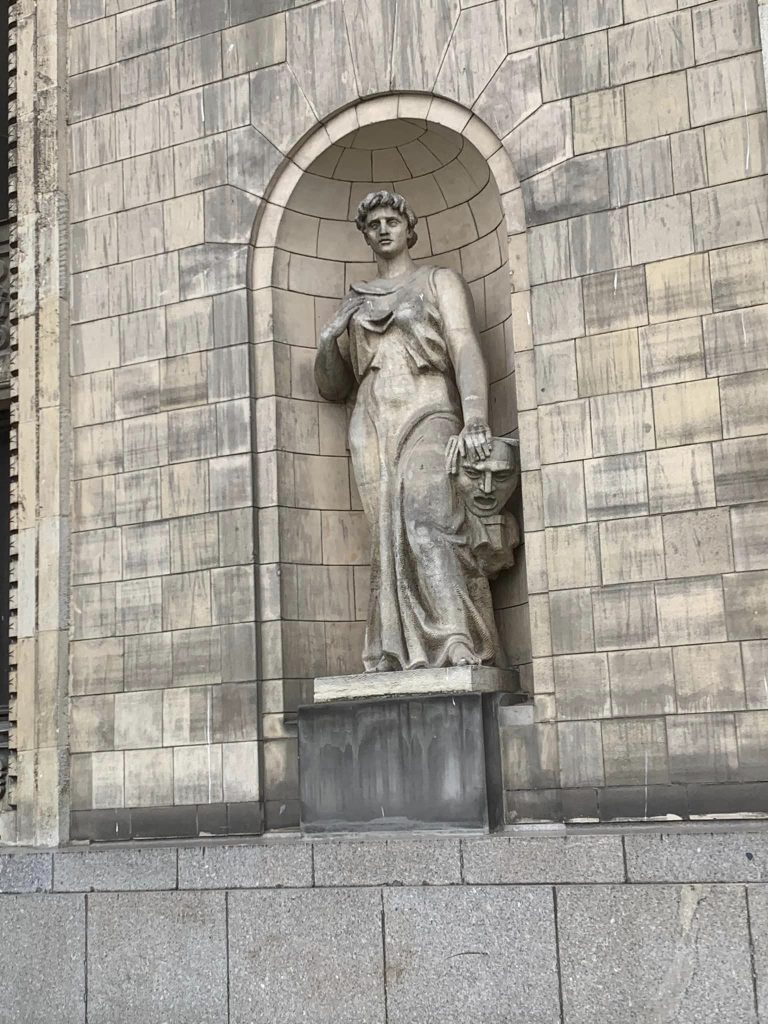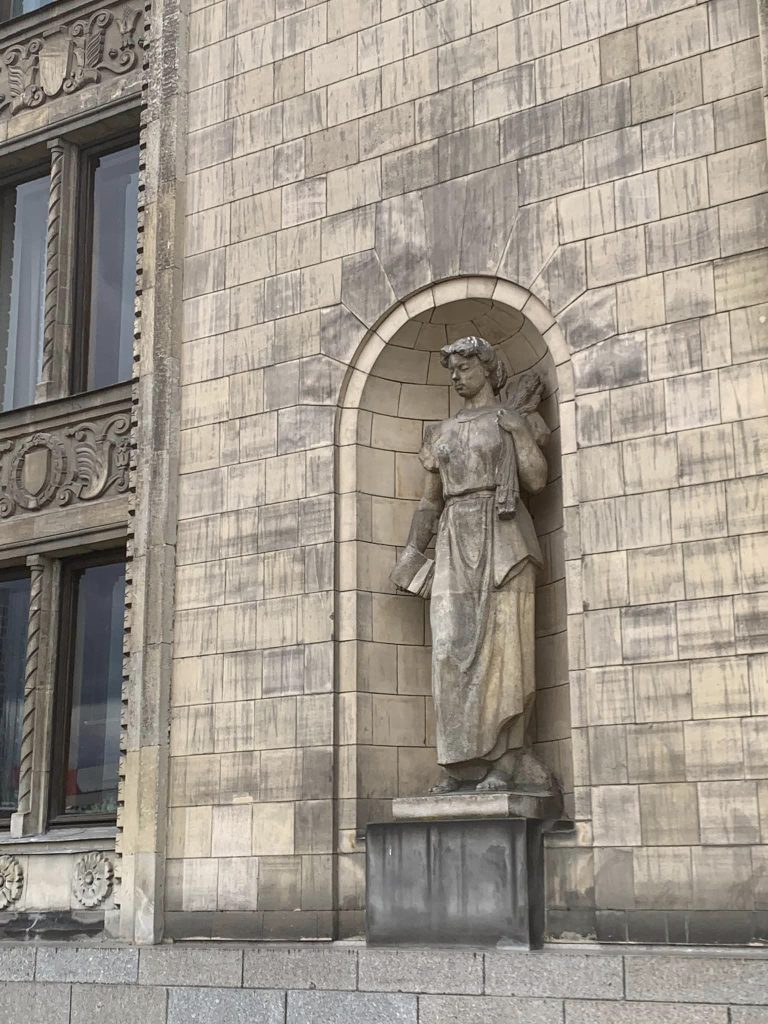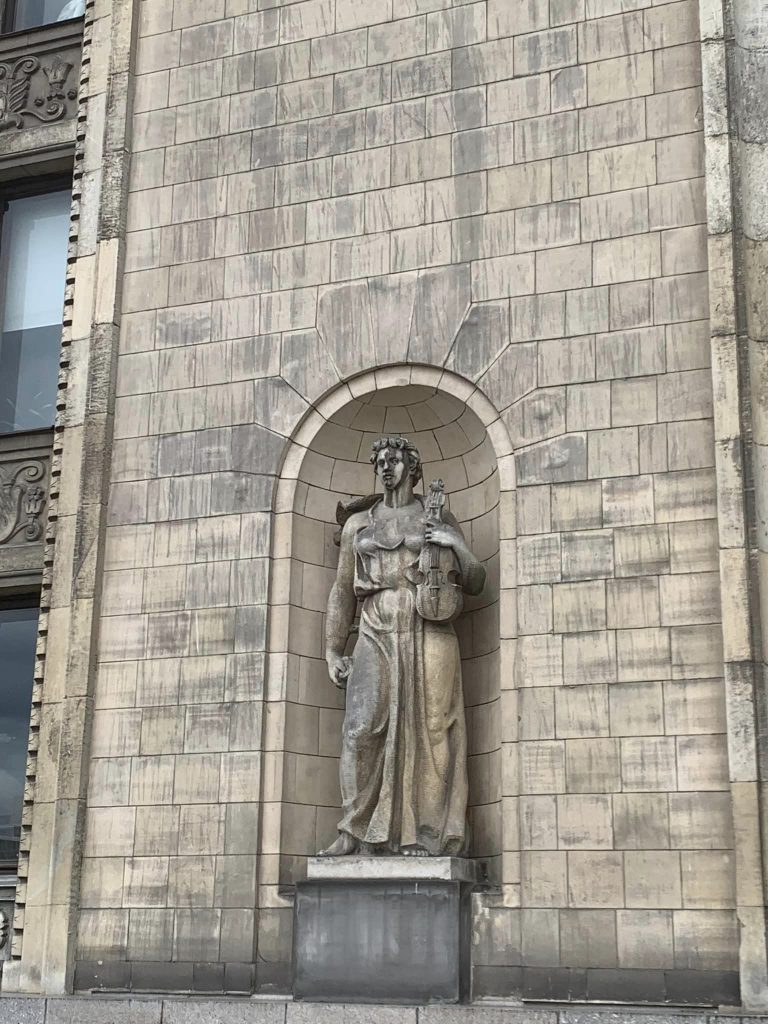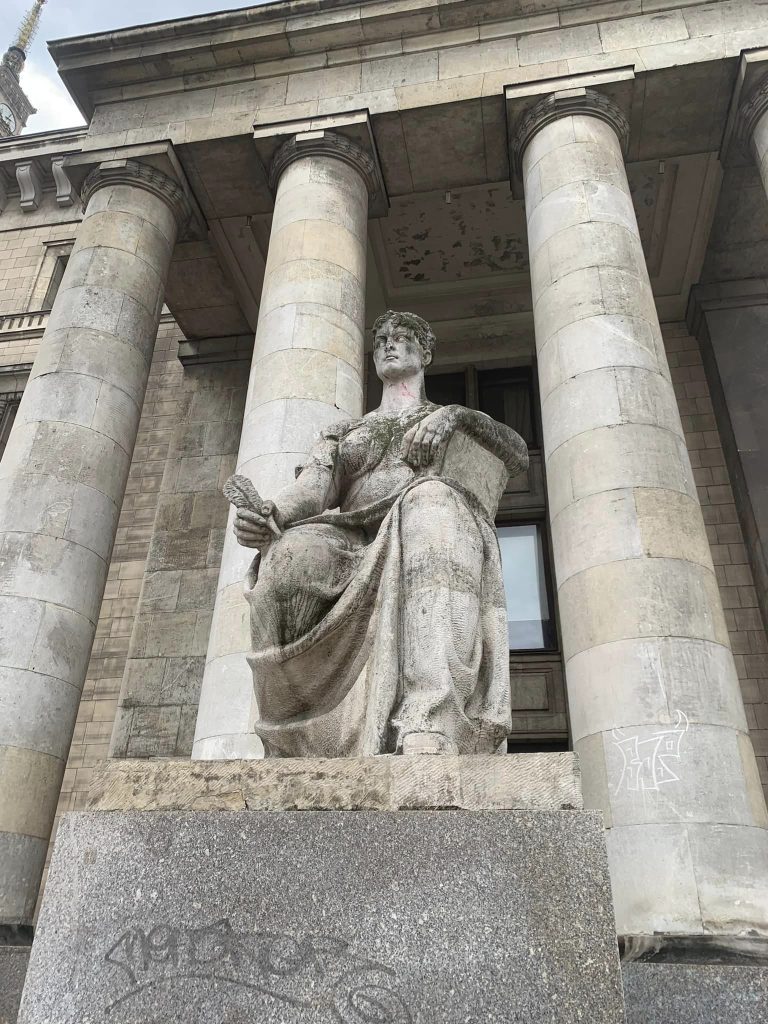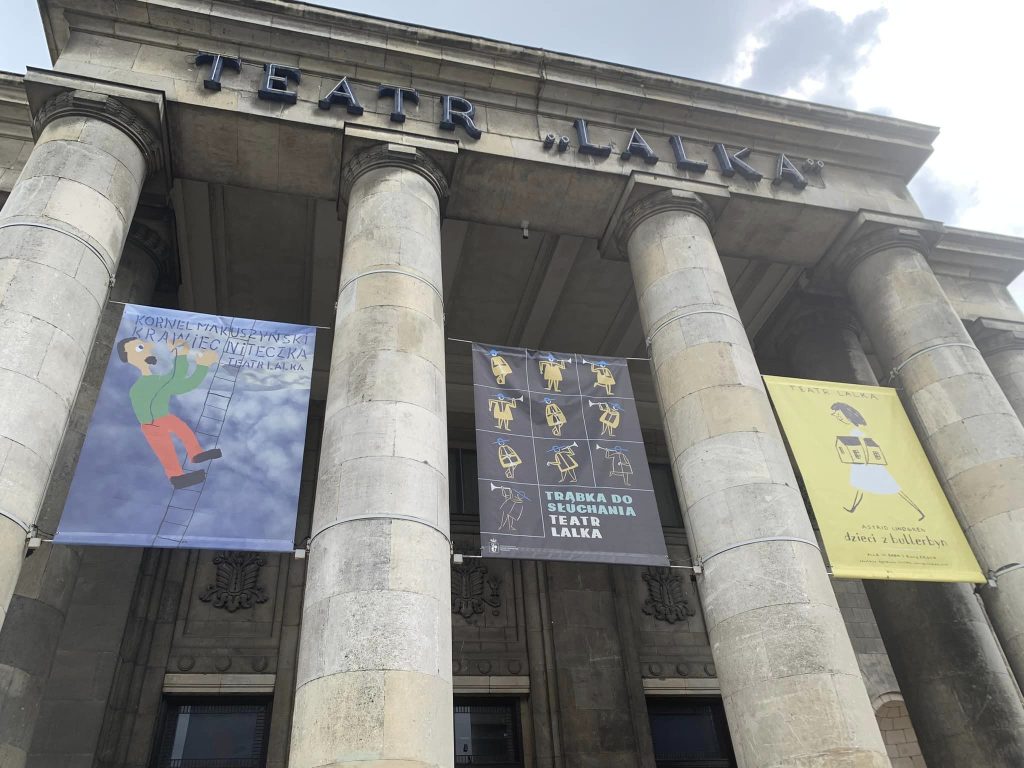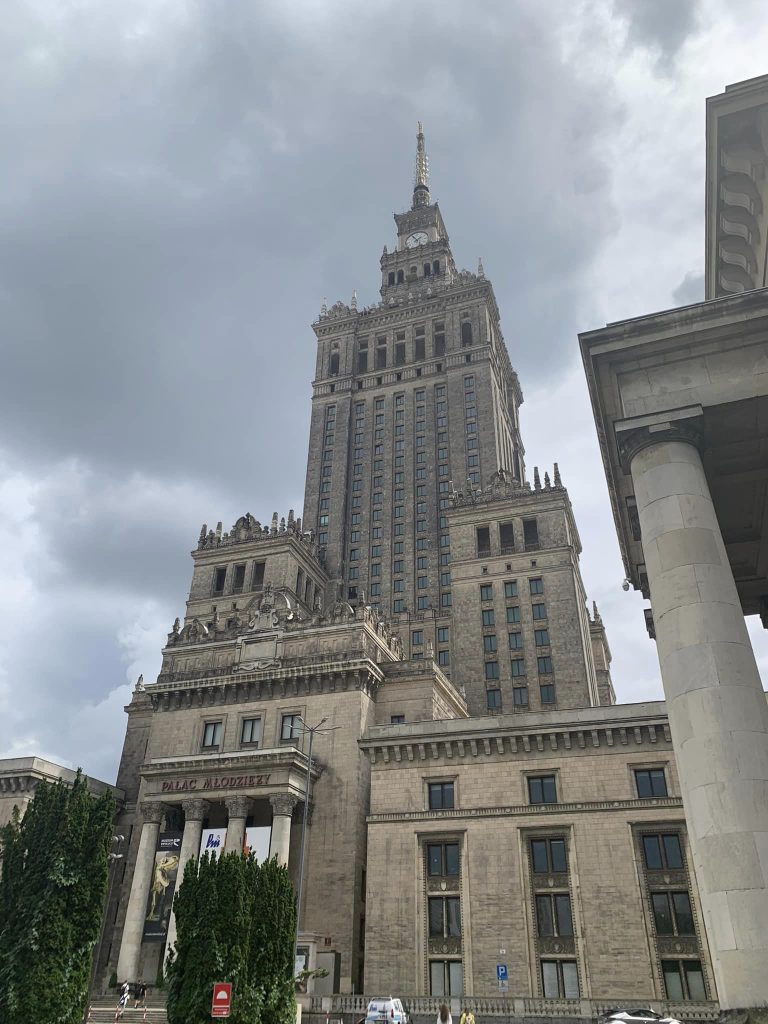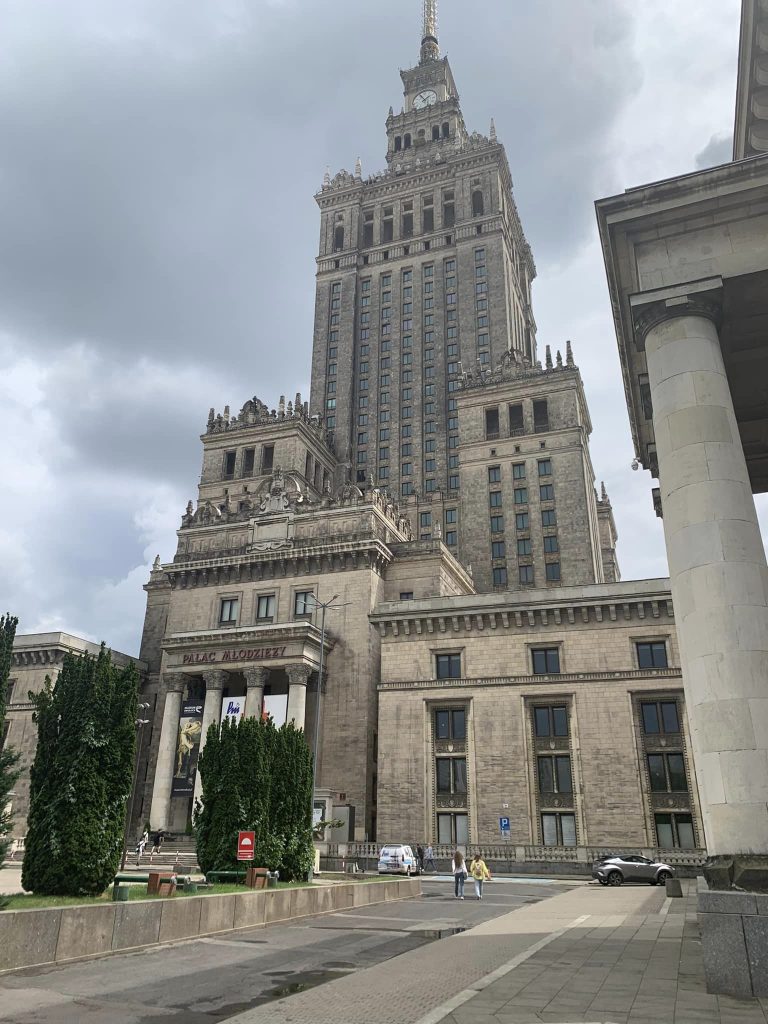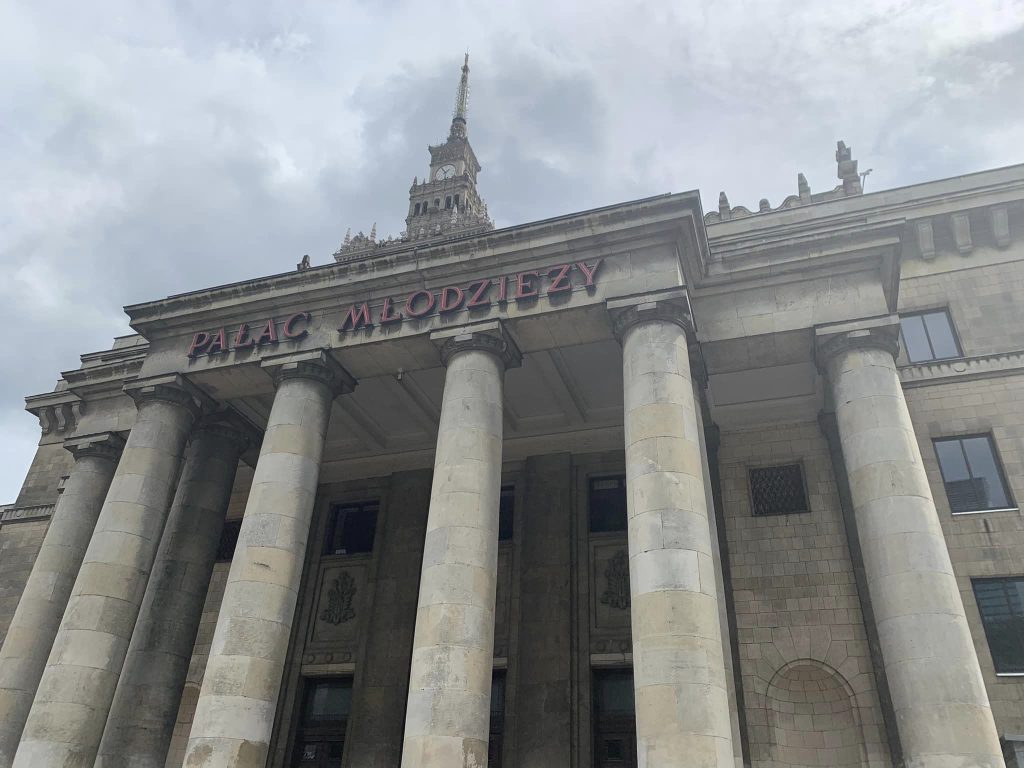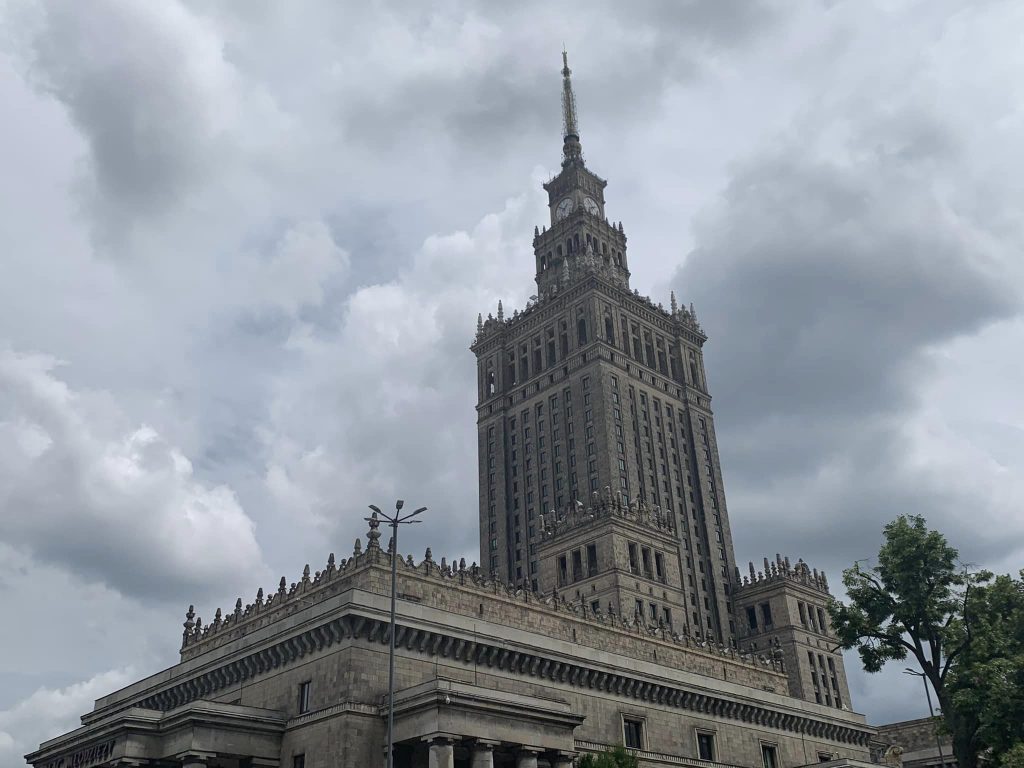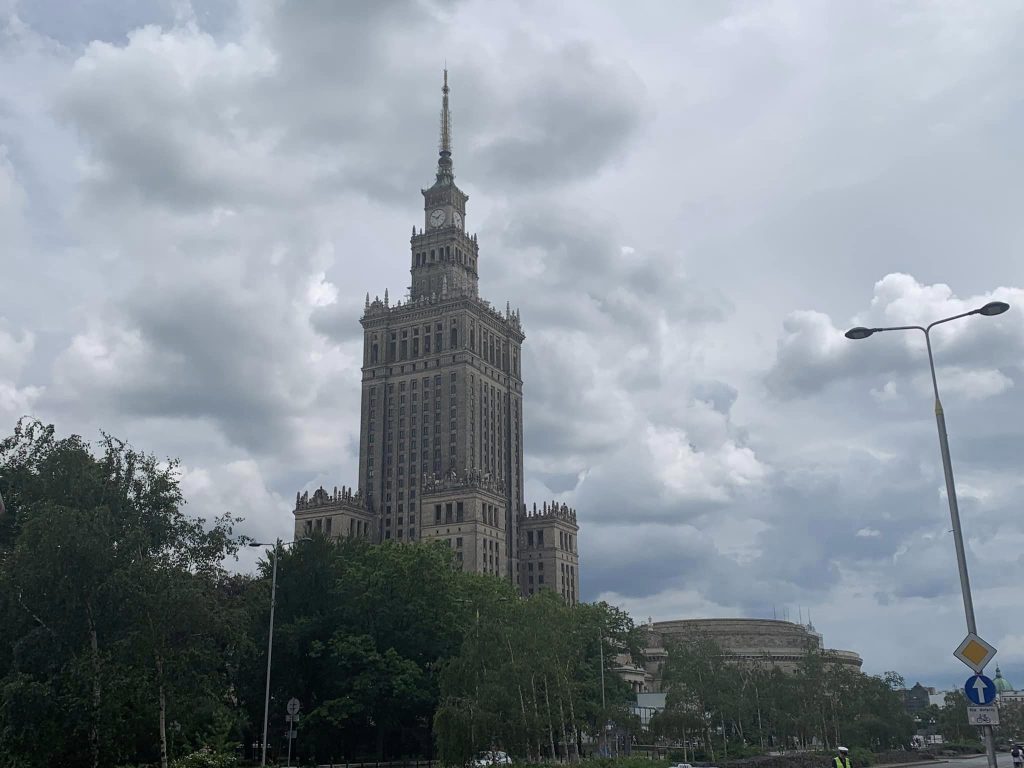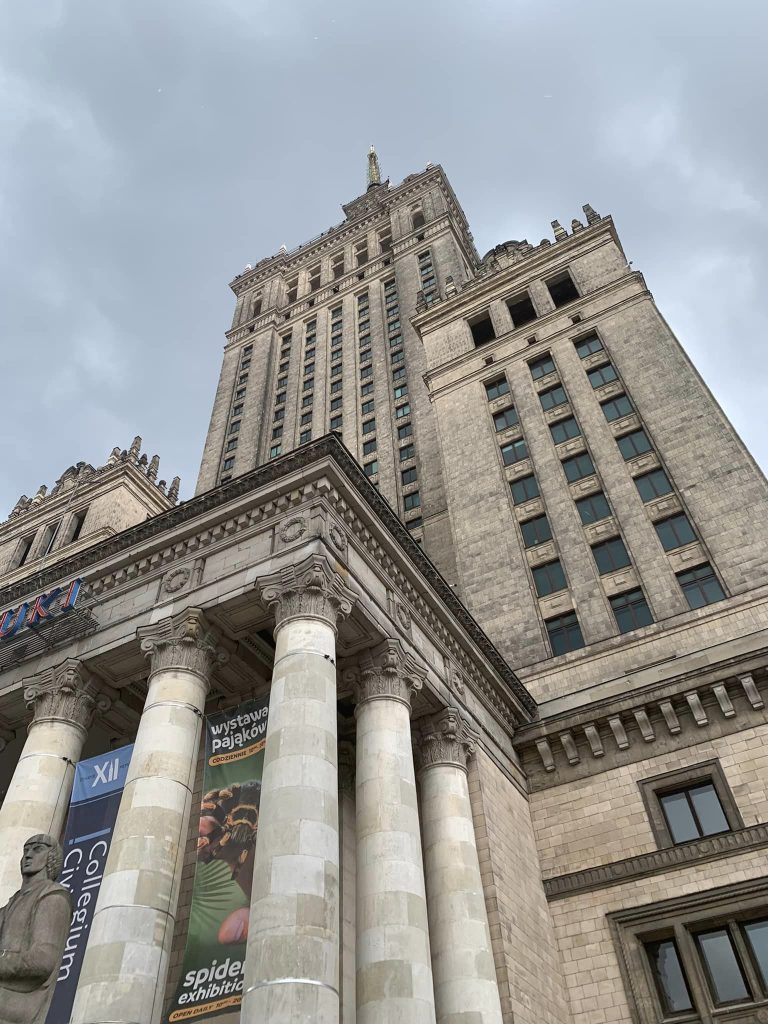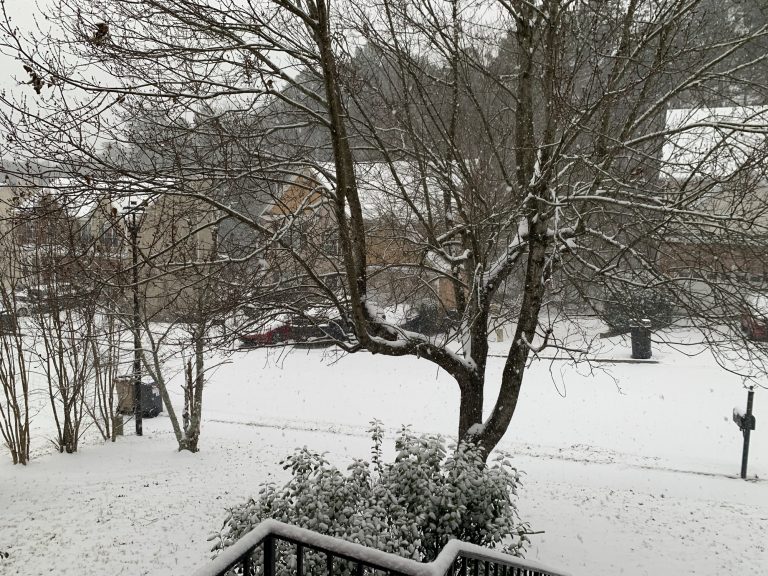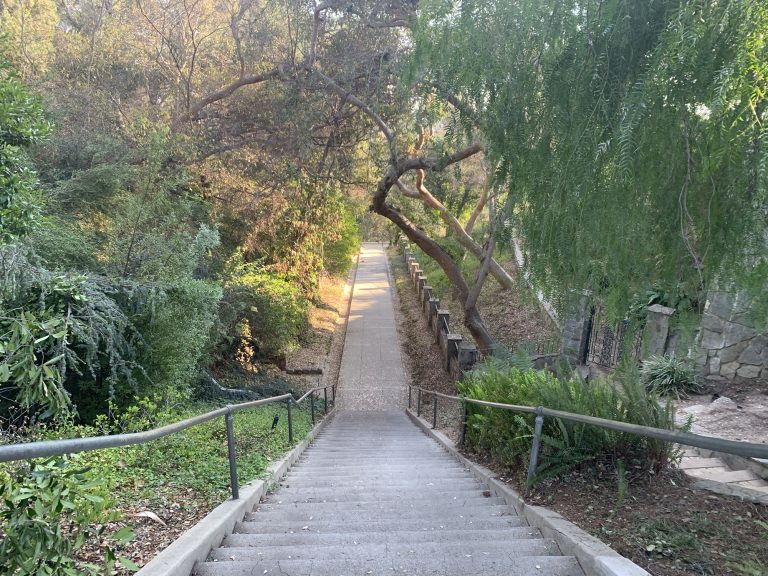Post-Soviet Palace of Culture: beautiful relic or symbol of communism?
I had a great time taking these pictures and talking with a couple of locals. I asked them if the Soviets built it, or the Polish, and they said definitely it was the Polish, but under the direction of a puppet dictator state (Poland of the 1950s). I’ve posted my photos at the end of the this article.
The Pałac Kultury i Nauki in Warsaw, Poland, is a site to behold. The Palace of Culture was built after World War II during the reconstruction of Warsaw. Warsaw had been completely destroyed by the war. It was financed partially by the Soviet Union but built by Polish people. Now, it stands as a strange artifact, as Poland is no longer part of the Soviet Union. It’s sort of a museum now that serves as a reminder of Poland before it became independent of the Soviet Union.
The Palace of Culture and Science is a massive, imposing structure with a clock tower that looms over the city. For some, it’s a beautiful relic of the past, while for others, it’s a symbol of communism and Soviet dominance. The mixed feelings it evokes are palpable. Talking to a few Polish people, they don’t have too many good things to say about the old Soviet Union. The memories of that era are still fresh, and the building can feel like a reminder of a time when Poland’s autonomy was compromised.
However, the Palace isn’t all doom and gloom. On weekends, you’ll see locals and tourists alike enjoying the space. It houses theaters, museums, and even a conference hall. The viewing terrace offers some of the best views of Warsaw, making it a popular spot. Despite its controversial history, people come out to appreciate it, snapping photos and marveling at its grandeur.
The Palace of Culture and Science is a testament to a complex history. It’s a place where beauty and controversy coexist, where people can reflect on the past while enjoying the present. The building may have started as a Soviet project, but over time, it has become a part of Warsaw’s identity, embodying both the struggles and resilience of the Polish people.
